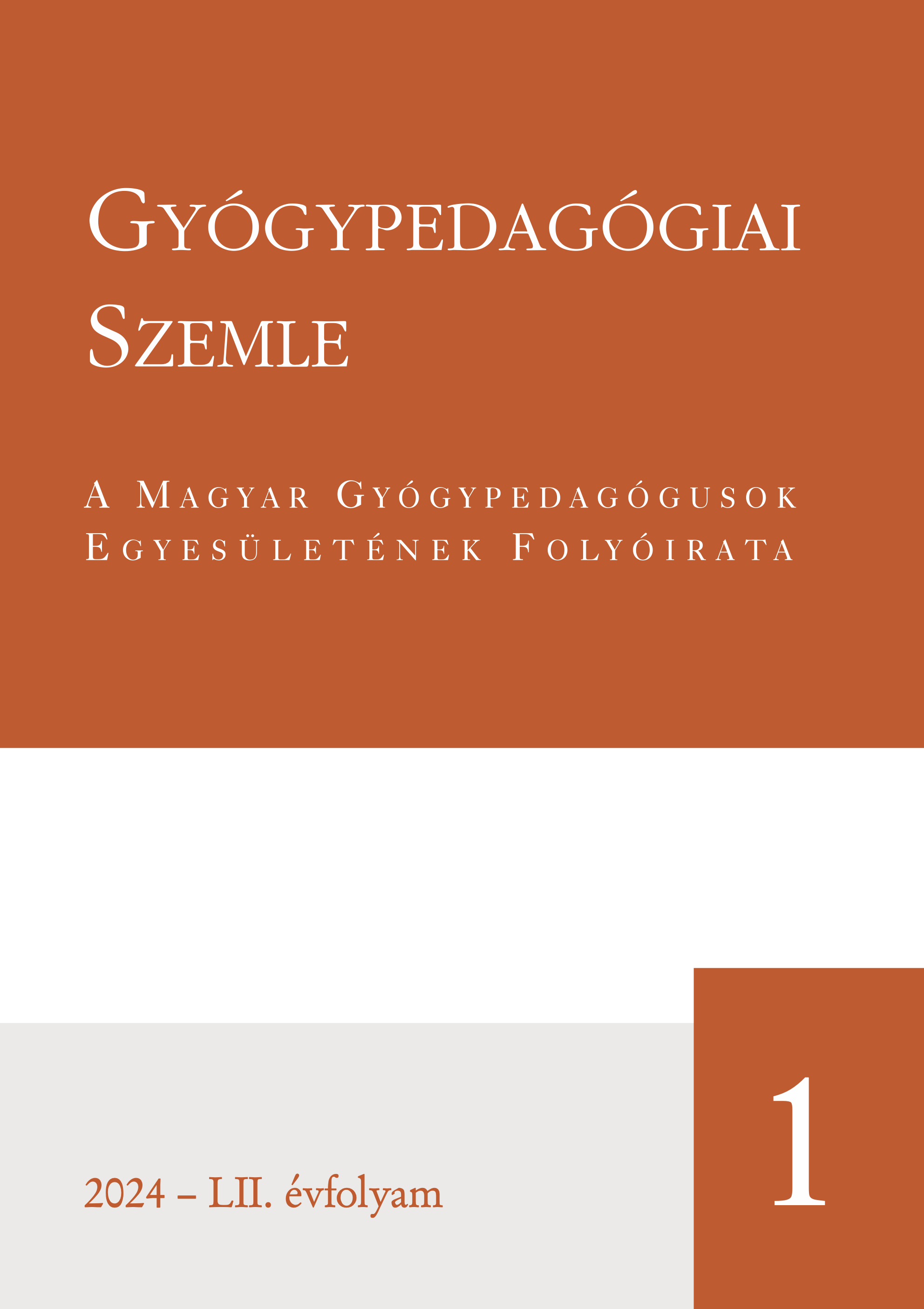A rare case: movement education of a child with epidermolysis bullosa
DOI:
https://doi.org/10.52092/gyosze.2024.1.3Keywords:
epidermolysis bullosa, rare disease, pseudosyndactyly, somatopedagogy, case report, movement educationAbstract
Background and aims: Epidermolysis bullosa (EB) is a rare genetic disorder that is associated with extreme vulnerability of the skin and mucous membranes. EB does not directly affect the musculoskeletal system, but it causes limited range of motion due to scarring. Currently, there are few professional guidelines for the somatopedagogical care of people with EB, so with our study, we would like to summarize the literature and our own experiences to offer support and adaptive solutions in school and at home.
Method: To map the child’s functional and school activities we carried out somatopedagogical functional assessment and pedagogical observation. We also performed an adapted stereognosis test, as well as a self-reported assessment of upper limb functions and other specific activities using the ABILHAND-Kids and COSA questionnaires.
Results: Range of motion was found decreased and flexion contractures were found in several joints. Manipulation was severely hindered by pseudosyndactyly, but it did not hinder the recognition of objects in the stereognosis test. Writing was performed with a special two- handed technique. Eating was performed independently, while in other areas of self-care and daily living activities significant personal assistance was required.
Discussion and conclusion: An important aspect of this case study was the participatory approach. We found that adaptations are effective ways to the safe implementation of the school and the self-care activities. The prognosis of the disease varies from individual to individual, therefore the support needs to be person-centered, that fits to the current movement status and individual needs. In this process, close cooperation with the affected persons and their environment is essential.
Keywords: epidermolysis bullosa, rare disease, pseudosyndactyly, somatopedagogy, case report, movement education

